II Guitar Inventory Listings II Lap Steel Guitar Inventory Listings II Homepage II Site Map II Contacts II THIS GUITAR'S WEBPAGES: |
II Guitar Inventory Listings II Lap Steel Guitar Inventory Listings II Homepage II Site Map II Contacts II THIS GUITAR'S WEBPAGES: |
Kay used several logos and several methods of applying logos to headstocks. They used silk screening, stencils, stick-on foil logos, stick-on plastic logos and screw-on metal and plastic logos. I can see no sign of a logo application on this no-logo ORIGINAL paint finish. This leads me to surmise that this guitar was marketed to some department store chain that didn't have an in-house brand to have Kay apply to the headstock. This was / is called Jobbing and very common practice for marketing guitars to the budget-minded even today. I also suggest that tuner ferrule sleeves be installed on the top of these tuners (unless the guitar is purchased for an all-original collection). They will afford better light oiling and function. Standard ferrule sleeves are available at most good guitar / music stores or online at guitar parts suppliers. |
See NEXT PAGE for ongoing Misc. Info >>> |
Please inquire for additional information you might desire. ------- oOo ------- |
1964 Kay Value Leader Page 2; Neck and Fretboard Views: |
Please inquire for additional information you might desire. ------- oOo ------- |
Pages are image intensive; But images will likely load faster than viewing them with interest. |

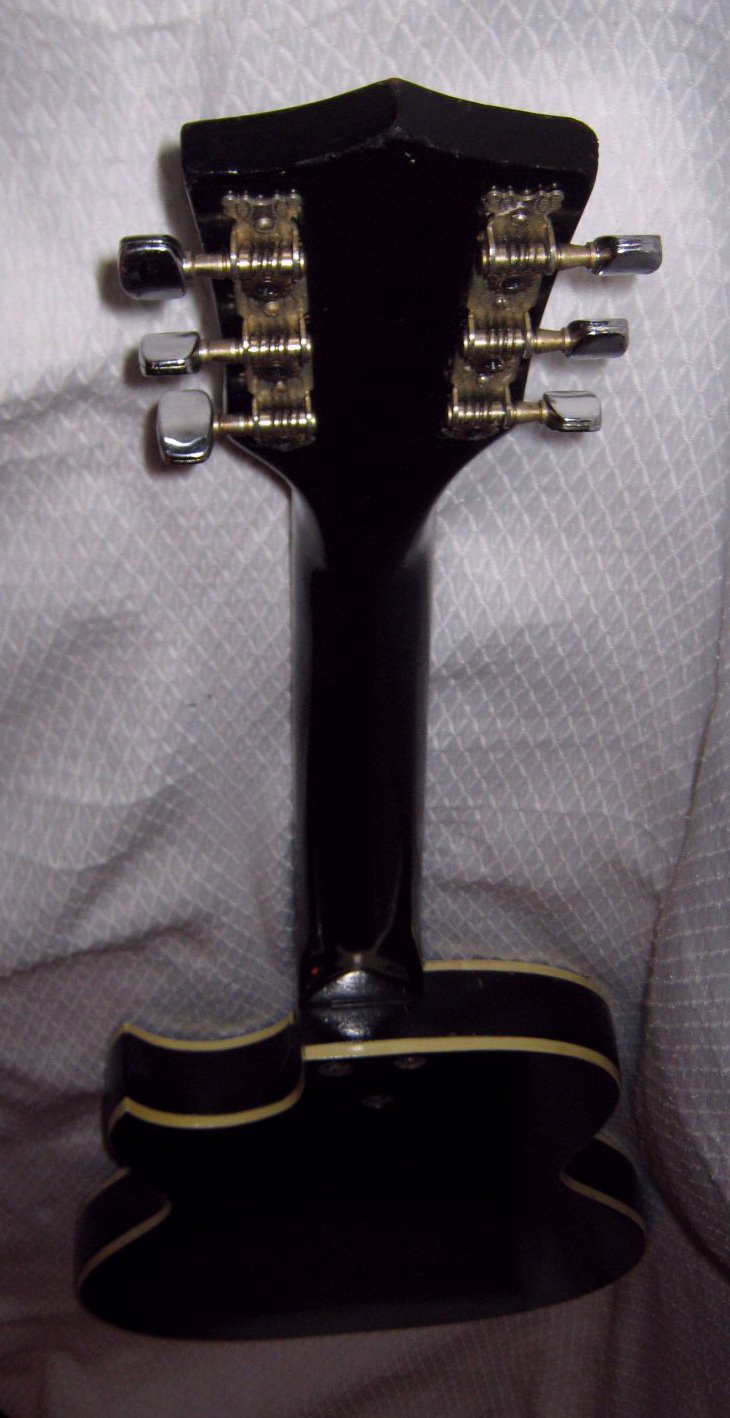

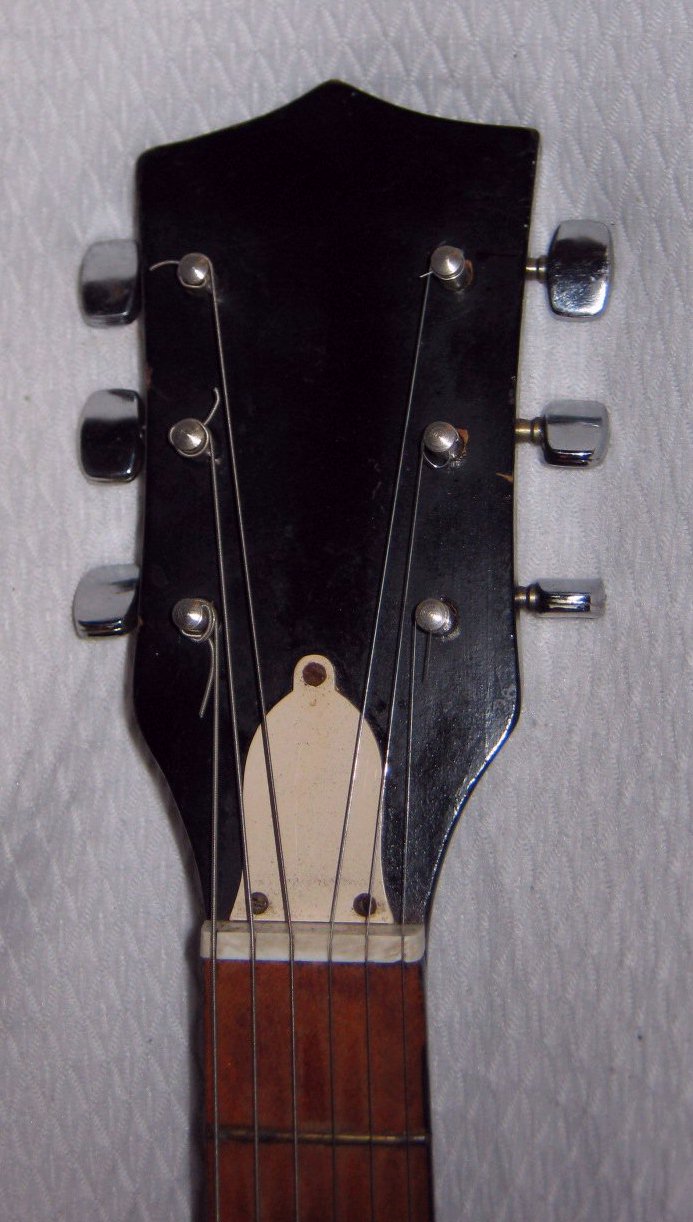


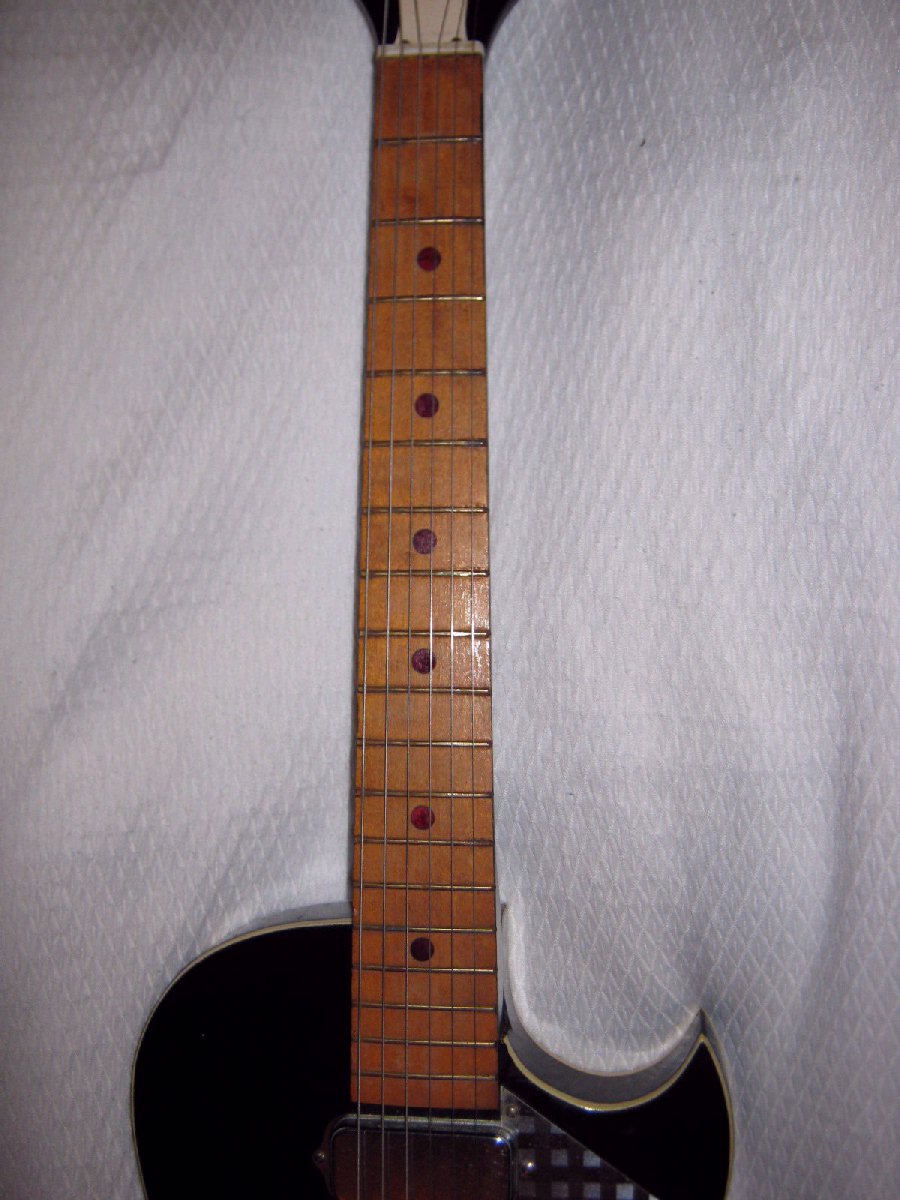
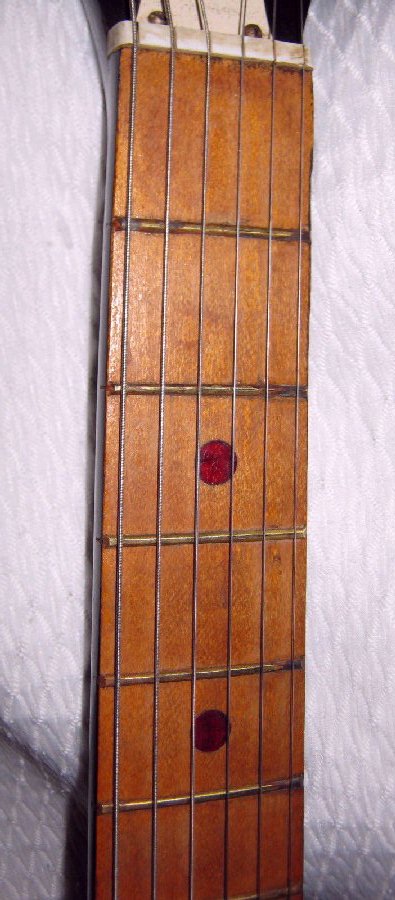
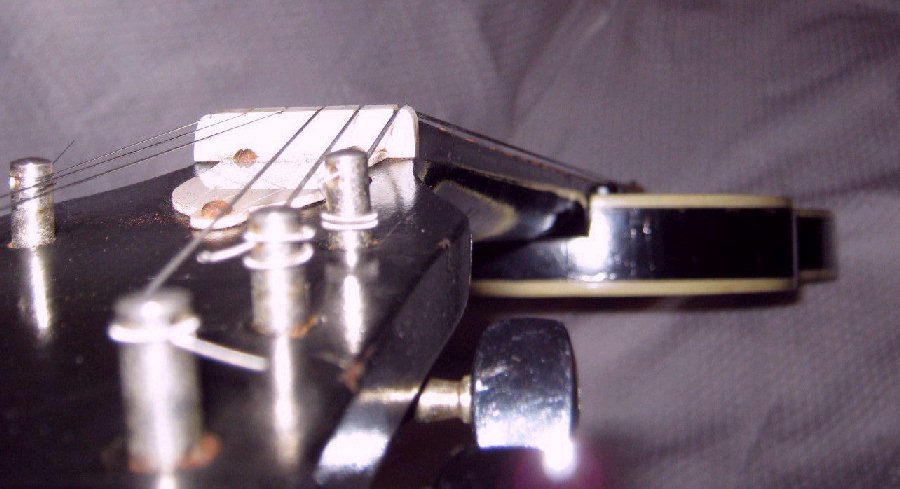

See NEXT PAGE for ongoing Misc. Info >>> |
These tuners will work for a Player that knows how / why to use tuners properly when tuning (always raise up to the note because tuning downward releases the cam-lock of old vintage or budget tuners). A Player intending to play this guitar might want to change these tuners out for higher quality tuners for playing. The back of the neck has some nominal scuffs under the 3rd fret area. It looks like the guitar was stood up on it's butt in a favorite place that put some nominal scuffs in that one small area over a period of time. They don't even show in the pic below. |
Kay used several logos and several methods of applying logos to headstocks. They used silk screening, stencils, stick-on foil logos, stick-on plastic logos and screw-on metal and plastic logos. I can see no sign of a logo application on this no-logo ORIGINAL paint finish. This leads me to surmise that this guitar was marketed to some department store chain that didn't have an in-house brand to have Kay apply to the headstock. This was / is called Jobbing and very common practice for marketing guitars to the budget-minded even today. I also suggest that tuner ferrule sleeves be installed on the top of these tuners (unless the guitar is purchased for an all-original collection). They will afford better light oiling and function. Standard ferrule sleeves are available at most good guitar / music stores or online at guitar parts suppliers. |
The frets and fretboard are in remarkably good condition but need a good professional cleaning and the frets dressed better than the factory did (unless a Collector is buying this guitar to remain factory original). |
The pickup covers are very nice and not scarred. They will look very nice after the guitar gets a good cleanup. See images in the electronics section of page 3. |
Neck relief is right-on for all-around playing. I doubt anyone will be playing speed metal flash on this guitar ; Although that's quite possible with a good and thorough professional set-up. |
If this guitar were my Player, I would increase the neck-to-deck angle (deck angle) in the neck pocket. This neck angle was set flat from the factory, which doesn't allow the bridge to adjust the strings action closer to the fretboard than what you see in the above 2 pictures. Increasing the neck's deck angle would bring the butt of the fretboard closer to the strings and thus the bridge would have it's full adjustment to set whatever fingering action a Player desires. |
I do not know if these tuners are original or not; They are certainly of the type that would be on a guitar like this. By 1964 American guitar makers were "beta" trying some parts from Japan, which I believe these tuners to be. Style & quality wise they would be right in line with tuners used on earlier years Kay Value Leaders (see image 2 images below). Do not discredit / discard these vintage tuners. They're not easy for purists to find, and their long string shafts are sought after for use on some vintage guitars that have thick headstocks, such as some lap steels do. I will be delighted to exchange these tuners for modern high quality tuners should a Buyer desire. |
The fretboard's light faux stain-finish has ambere with age and like allot for that quality of patina. The fretboard should be cleaned with great care to make sure that water, detergent and / or oil doesn't get into the fret slots. These frets would also be much nicer and play better if they were dressed a bit. In this guitar's days, dressed frets were not of particular concern for the budget-minded Players these guitars were made to target. |
Typical finish checking, excentuated by the characteristics of ultra-sensitive digital photography under flash. |
< |
> |
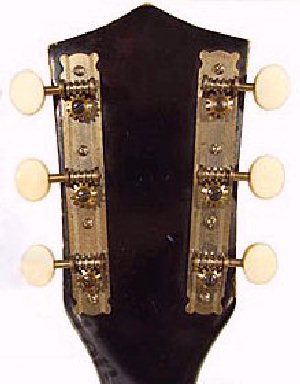
It was not uncommon for guitar manufacturers to change some parts over the lifetime of a particular model. Here are tuners that were installed on an earlier year model Kay Value Leader. |

Notice below that there is sawdust under the trussrod nut cover and the witness paint on the trussrod nut is undisturbed. That shows that the trussrod nut cover had never been opened until I did to inspect it. |
II Guitar Inventory Listings II Lap Steel Guitar Inventory Listings II Homepage II Site Map II Contacts II THIS GUITAR'S WEBPAGES: |
II Guitar Inventory Listings II Lap Steel Guitar Inventory Listings II Homepage II Site Map II Contacts II THIS GUITAR'S WEBPAGES: |